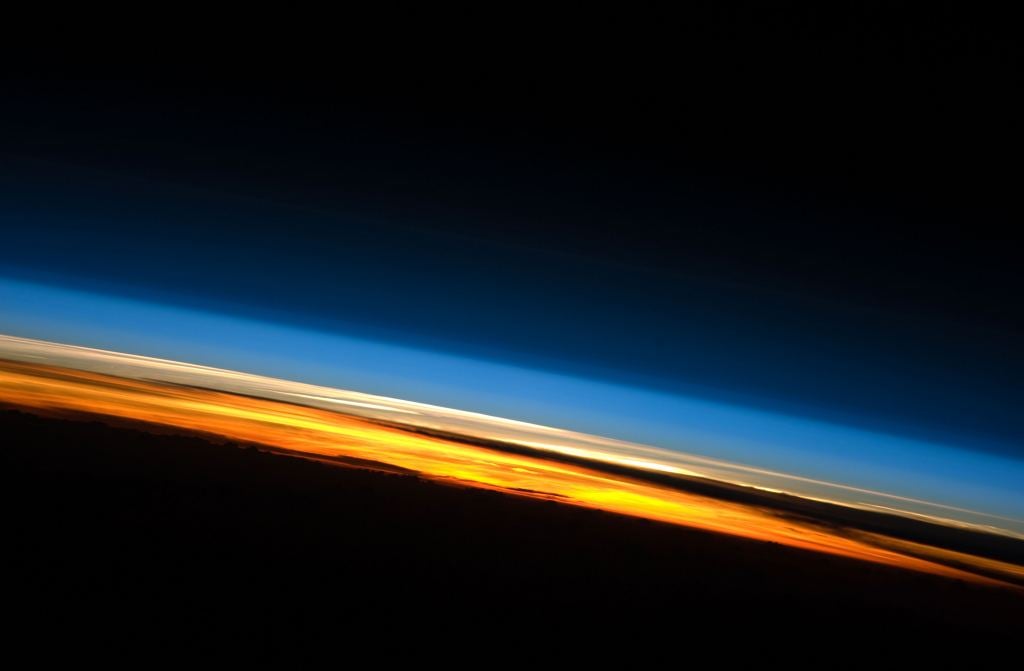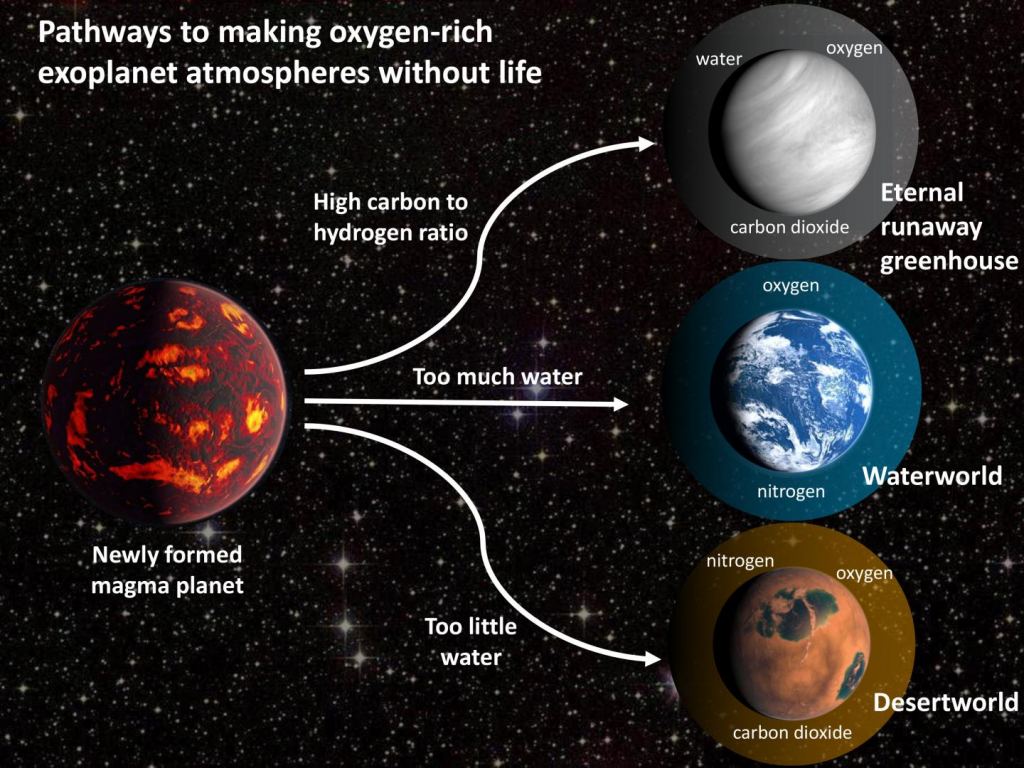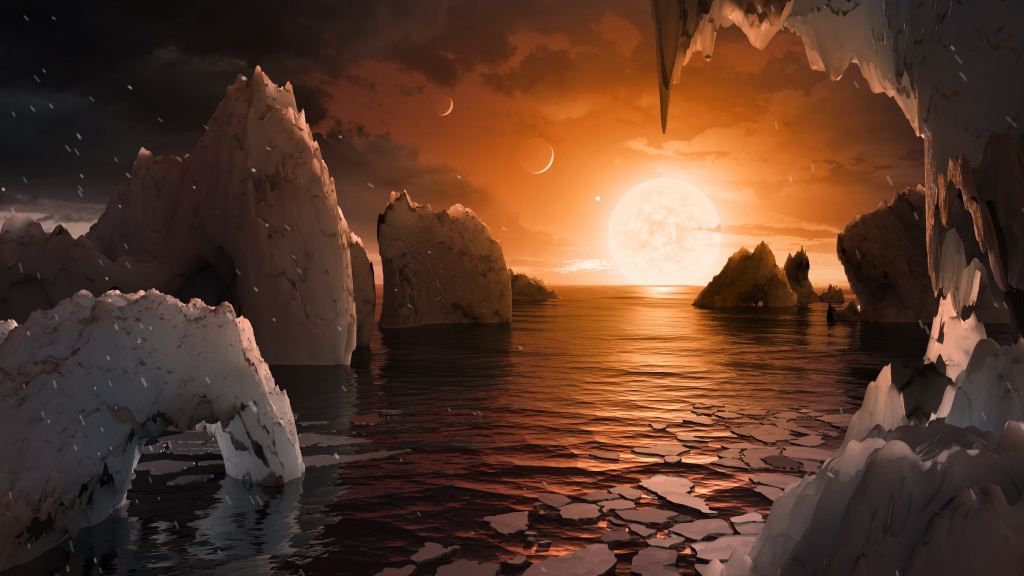We now know the universe is filled with planets. By one estimate, there are more than 20 billion Earth-like worlds in our galaxy alone. But how many of them are likely to have life? And how would we know if they do? Unless they happen to send us a very clear message directly, the most likely way we'll discover exoplanet life is by looking at their atmospheres.
We have already detected atmospheres around a few large exoplanets, and when the James Webb Telescope is launched we should be able to study the atmospheres of Earth-sized exoplanets. But what would we need to see to confirm the presence of life?
One of the strong candidates has been oxygen. On Earth, it's generated by living organisms through photosynthesis, and it makes up about 21% of our atmosphere. Oxygen is also fairly easy to detect by its spectral signature. It's also a reactive element, so it has to be replenished by living things. So if we were to find oxygen and water in the atmosphere of an Earth-sized habitable-zone exoplanet, that would surely be convincing evidence of extraterrestrial life. But as a recent study shows, finding oxygen and water isn't enough.
The study shows that we can't rely on Earth as the standard model for a planet's atmospheric evolution. Early Earth had an oxygen-poor atmosphere. Early life forms created oxygen as a waste product. Only after the evolution of photosynthesis did atmospheric oxygen become plentiful. So for Earth, the rise of oxygen is a direct result of terrestrial life. But our path to oxygen isn't the only possible path, particularly for planets orbiting a red dwarf star.
While hydrogen is by far the most abundant element in the universe, oxygen is expected to be common on rocky planets, along with carbon and nitrogen. So, we will likely find compounds such as water (H2O), carbon dioxide (CO2), and nitrogen (N2) in the atmosphere of almost every potentially habitable world. Free oxygen could be liberated from water and carbon dioxide biologically as it is on Earth, but the researchers found three scenarios where free oxygen appears geologically.
The team focused on the planets of red dwarf stars. Red dwarfs make up about 75% of stars in our galaxy, so most potentially habitable worlds will likely orbit a red dwarf. But red dwarfs are very different from Earth's Sun. They are smaller and therefore take longer to move from a protostar to a main-sequence star. They can emit large solar flares, which could work to strip the atmosphere of a close-orbiting planet. They also emit much less ultraviolet light, which can ionize atoms and break apart molecules.
It turns out that this dramatically changes the evolution of a planet's atmosphere. If a red-dwarf planet has a high carbon to nitrogen ratio, then it likely enters a runaway greenhouse state with a thick carbon-dioxide atmosphere and free oxygen. If it is a water world, oxygen is liberated from water vapor in the upper atmosphere. If it is a dry planet, then oxygen remains in the atmosphere along with nitrogen and CO2. All three of these cases would have an oxygen signature when observed by our telescopes, even though they don't necessarily have life. For red dwarf planets, the presence of oxygen could be a false positive.
Interestingly, the study also showed that these scenarios are much less likely for larger, more Sun-like stars. If we find free oxygen around a planet orbiting a Sun-like star, that could be strong evidence of life. The upshot of this research is that finding life on other planets is complicated. As we gather tantalizing evidence in the next several years, we must remember to be cautious about claimin too quickly that we've found signs of life.
Reference: Krissansen-Totton, Joshua, et al. " Novel oxygen false positives on habitable zone planets." *AGU Advances* 2.2 (2021): 2576.
 Universe Today
Universe Today



